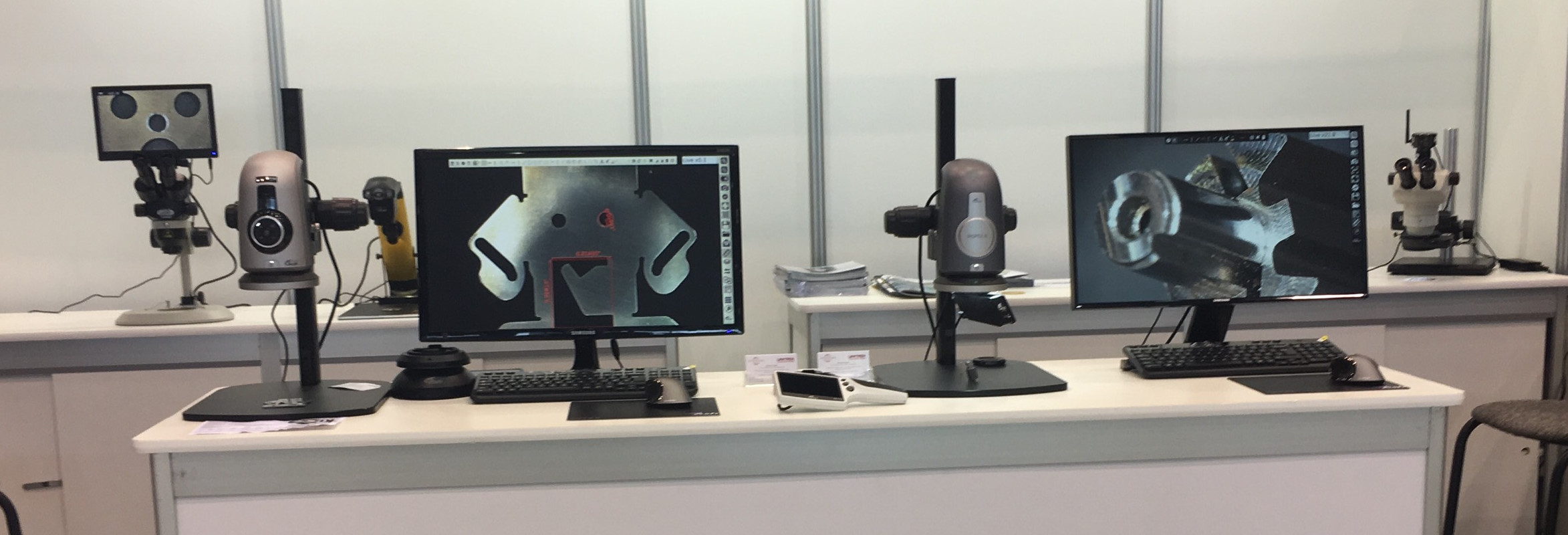Both digital and optical, or traditional, microscopes have made significant advancements in the past 50 years. At UNITRON, we recognize that there is a need for both types of microscopes, as they both have distinct advantages for certain applications.
Here, we review some of the key differences between the two types and some scenarios in which either an optical or
digital microscope would be preferable:
Image Viewing
For true, 3D observation of a specimen, there is no substitute for traditional stereo microscopes. Digital images are “flattened,” due in nature to the flat camera sensor and, therefore, provide limited depth perception compared to binocular (or trinocular) stereo microscopes. Magnification power in digital microscopes is primarily determined by the optical lens, after which digital zoom power simply makes the image larger by displaying less and less of the field of view. Thanks to the assortment of objectives (from scanning to high power), a compound optical microscope can provide a greater level of detail at higher magnification, which often makes it a better choice for observing samples of small size or with fine details such as metallurgical samples, coatings, materials science samples, and particulates.
Image Capture
To capture and store images, a digital microscope is easy to use and has everything needed already included (i.e. camera, software and often “computer”). Industries in which product quality control is conducted via microscopes may benefit from the simplicity of digital instruments. Some microscopes already have a built-in monitor. Many of our digital microscopes do not even require the use of a computer; The user can simply press one button to take a photo, which is then saved to a USB storage device. If you need to capture higher resolution images, or images at greater magnification, there is always the option to add a camera to a trinocular optical microscope.
Ease of Use
In terms of ease of use, it’s hard to compete with the simplicity of digital microscopes. Our ZoomHD technology offers live, high-definition images through either an integrated monitor or one supplied by the user. With on-board software, no computer is needed, making the instrument easy to set up in a production or QC environment. Many operators also find that digital microscopes are easier to change the field of view by adjusting the zoom control. For even more capability such as measurements, image comparison, preset viewing conditions, and access control, UNITRON offers digital microscope solutions from
Ash Technologies.
Flexibility
While fully integrated digital microscopes are arguably simpler to use in many scenarios, they can be limited in terms of how to view the sample. Optical microscopes allow the user to implement contrasting techniques such as differential interference contrast (DIC), phase contrast, and fluorescence. Optical microscopes also allow the addition of a microscopy camera, thus providing the high optical quality of viewing through eyepieces AND the convenience of viewing the digital image on a monitor.
Find the Right Microscope for Your Application
Whether you are looking for a completely digital solution or you would like to add a
digital camera to your optical microscope, UNITRON has the instruments that you need for your unique application. Contact us today to learn more about our products or receive a quote.



